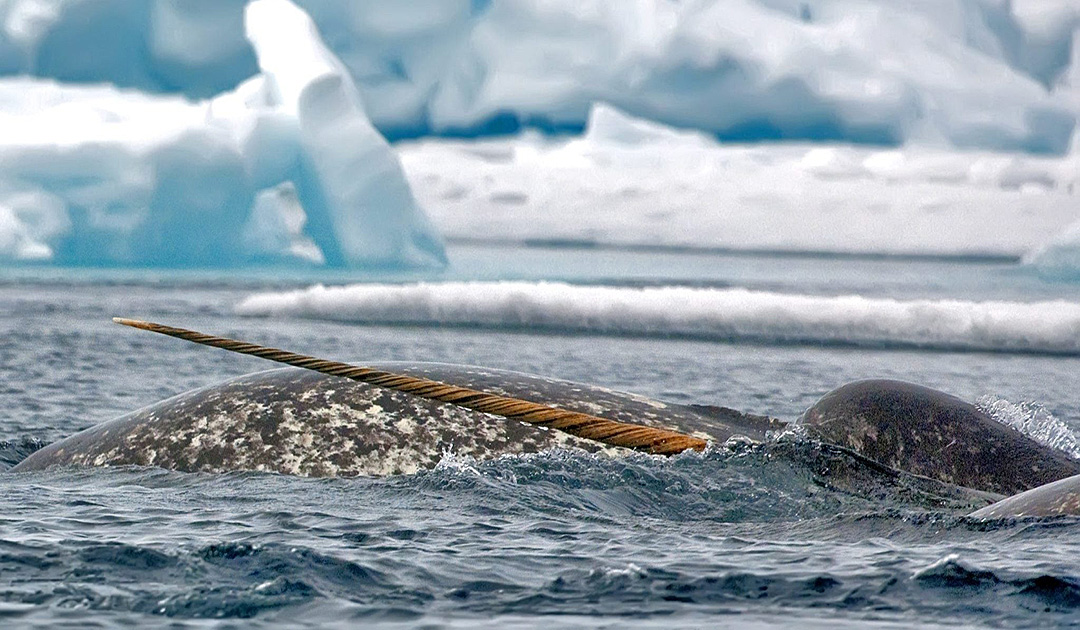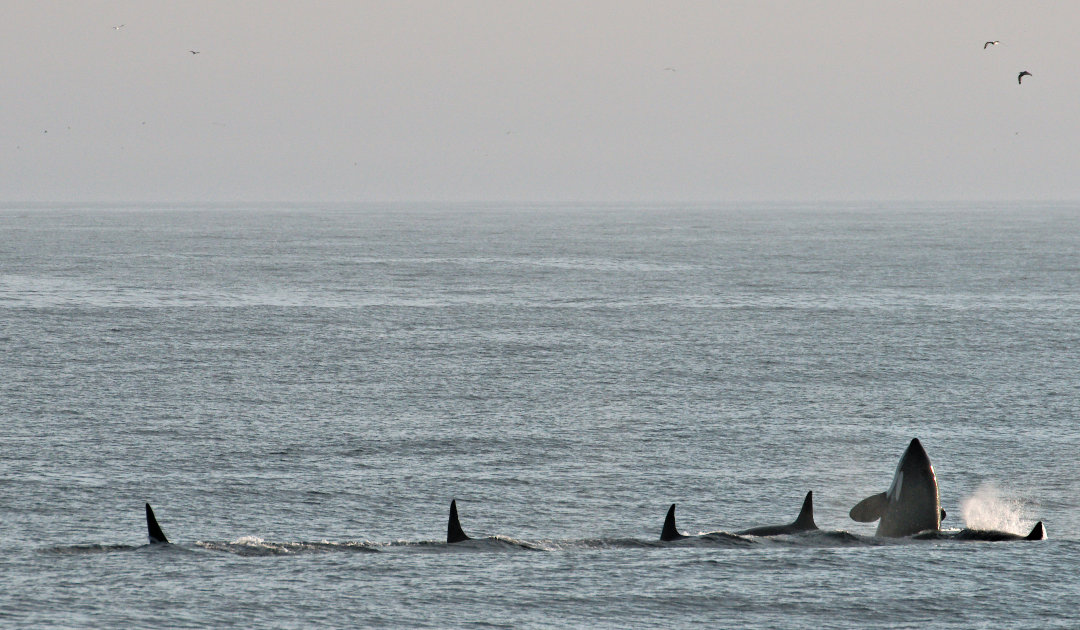
Researchers have found evidence that the ever-increasing shipping traffic along Baffin Island puts narwhals under stress. Moreover, narwhals are also threatened in their habitat by the increased occurrence of hungry orcas in the Canadian Arctic.

A new study discussed at the ArcticNet Science Conference on December 8 found that the stress hormone cortisol affects the behaviour of narwhals. According to the study, cortisol has increased by up to 200 percent as more ships entered the waters in the study area from 2006 onwards. The measurements were taken in Eclipse Sound, near Pond Inlet. Thereby, researchers have found evidence that increasing shipping traffic puts narwhals under stress. This is reported by the newspaper portal “Nunatsiaq News”. The Eclipse Sound in the north of Baffin Island is home to the world’s largest population of narwhals.
The stress hormone cortisol is responsible for increasing the energy available in the body to better cope with one-off or repeated physical and mental stress. Cortisol can be regarded as the most important stress hormone.
As Nunatsiaq News further reports, the narwhal samples were provided by the Mittimatalik Hunters and Trappers Organization and by James Simonee, a co-author of the study. Sampling covered three hunting seasons between 2000 and 2006 before shipping traffic to the Mary River Iron Mine Projecthad started. Further measurements were taken during the shipping traffic to the mines from 2013 to 2019. In the study, the content of the stress hormone cortisol in blubber was measured.

Orcas also cause stress
Increased shipping traffic is not the only thing stressing narwhals. The current estimated number of less than 200 orcas in the region could already have killed up to 1,504 narwhals during their annual migrations into the northern Baffin region. This is reported in a new research paper entitled “Killer whale abundance and predicted narwhal consumption in the Canadian Arctic”. The lead author of the research and analysis was Kyle Lefort, a marine biologist from the University of Manitoba with a fondness for orcas and narwhals. The study was published in the latest issue of the journal Global Change Biology.

At the moment, the effects of increased predator numbers in this marine ecosystem are ‘largely unknown’, said marine biologist Kyle Lefort.
From May to June, about 95,000 narwhals migrate to the north coast of Baffin Island and then return to the wintering grounds near the coast in Baffin Bay in late autumn. The warming of the Arctic could lead to earlier access and a longer ice-free period for hunting by orcas. The orcas could enter previously inaccessible areas. This means that they also stay longer in these Arctic waters, since climate change will cause the waters to freeze over only later.
These are not favourable conditions for the narwhals.
“More orcas could mean increased narwhal mortality, forcing them to migrate further north to areas with greater sea ice cover,” Kyle Lefort said.
Heiner Kubny, PolarJournal
Links to the Orca Study:
More on the subject:





